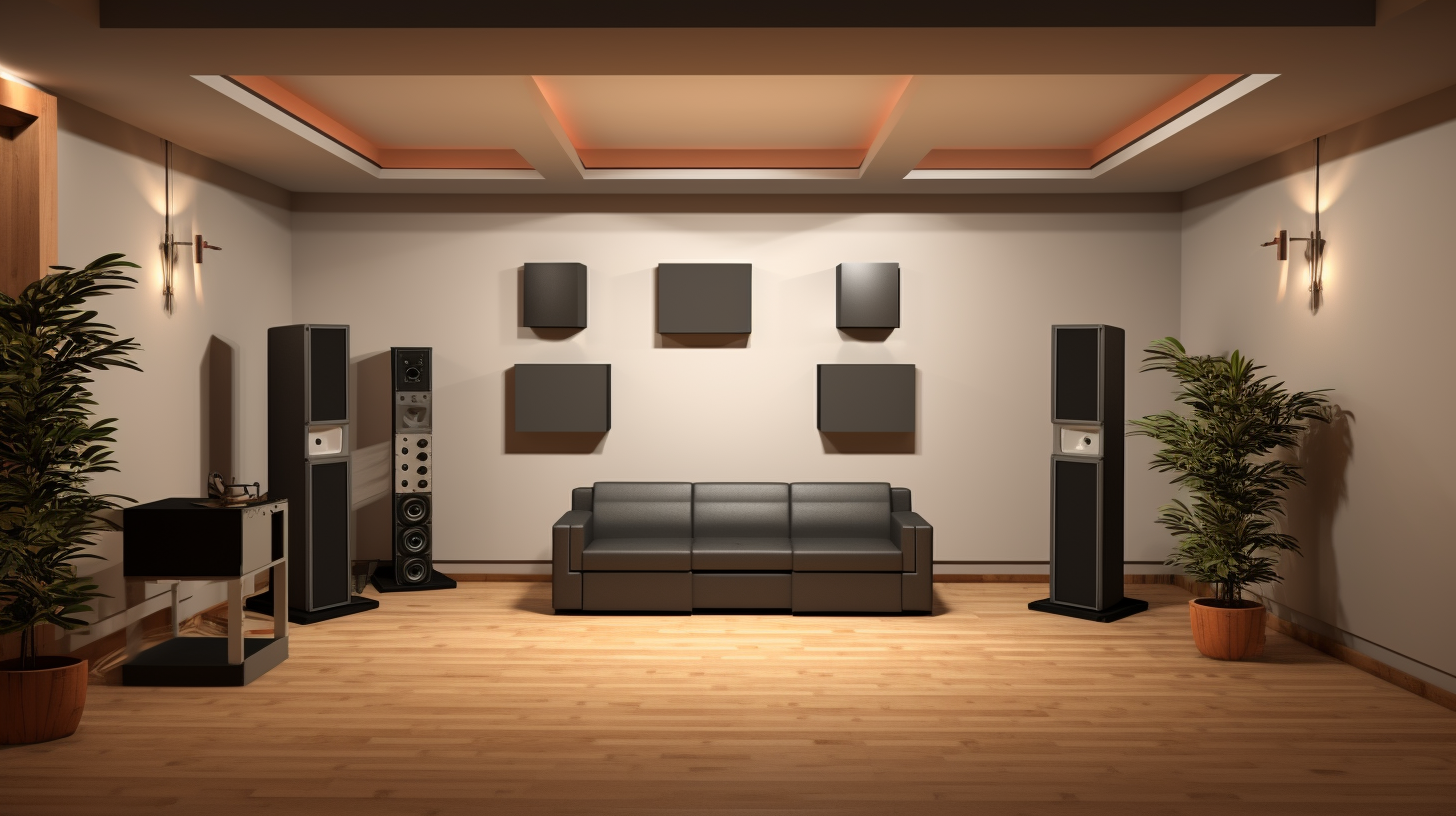Imagine sitting in your newly furnished studio, excitedly pressing the play button to experience the audio masterpiece you’ve spent hours perfecting.
The music starts, but something’s off. The bass frequencies are overwhelming, turning what should be a balanced, crystal-clear sound into a muddy mess.
Mastering the art of bass trap placement can revolutionize the acoustics of any room, from home theaters to professional music studios.
By focusing on strategically placing these specialized acoustic tools, you can achieve the kind of sound clarity you’ve always dreamed of, eliminating bass-related issues that ruin audio quality.
So, are you ready to elevate your audio experience to professional levels?
Let’s dive in and explore the intricacies of bass trap placement.
Why Bass Trap Placement Matters

The influence of bass frequencies on audio quality is a topic that often doesn’t receive as much attention as it deserves.
The uncontrolled bass can lead to a muddy or boomy audio experience.
This makes bass traps an essential tool for anyone serious about audio quality, whether you’re a music producer, audiophile, or home theater enthusiast.
The role of a bass trap is highly specialized.
Unlike diffusers or acoustic panels, which are designed to treat mid and high frequencies, bass traps focus solely on absorbing low frequencies.
Getting the placement of these traps right is crucial because their effectiveness is contingent on their position within the room.
The positioning can be the difference between clear, balanced sound and an audio environment with persistent bass-related issues.
Where is the Best Place to Put Bass Traps?
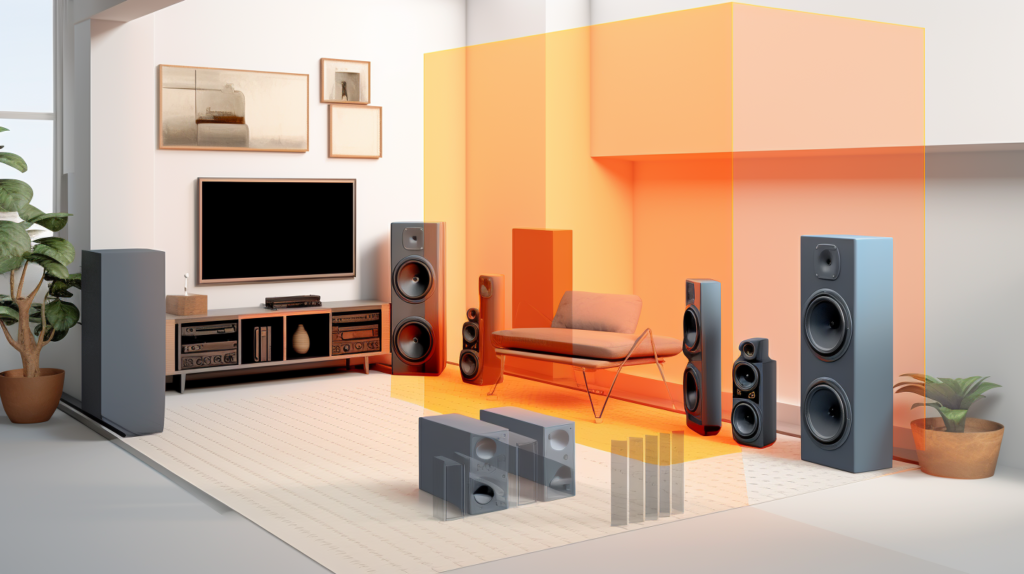
The spatial characteristics of a room have a profound impact on sound behavior. Low frequencies, or bass, are particularly hard to manage due to their longer wavelengths.
They tend to congregate in certain areas, like room corners. This is why corners are often cited as the first place to install bass traps.
Starting with the corners of your room, particularly where two walls meet the ceiling or floor, can offer the most bang for your buck.
However, not every room is a perfect square or rectangle, and not every room has corners that are easy to access.
There may be windows, doors, or built-in furniture that obstructs the ideal corner placement.
In these cases, it’s important to be flexible and consider additional placements along room boundaries where walls meet other walls, or the floor meets a wall.
Even within a seemingly straightforward space, the room’s size, shape, and purpose can all impact the ideal placement of bass traps.
Should Bass Traps be in the Corner or Wall?
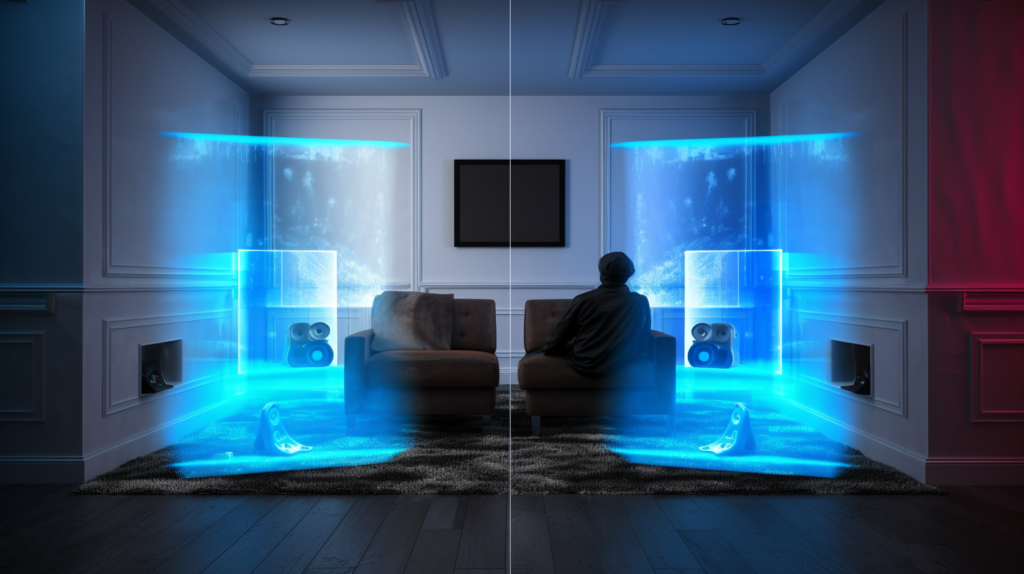
For years, audio professionals have debated the merits of placing bass traps in corners versus along flat walls.
Each approach has its advantages and limitations, which can be influenced by the specific characteristics of the room in question.
Corners are the junction point of two or more surfaces, meaning they’re places where sound waves, particularly bass frequencies, are likely to accumulate.
Installing bass traps here can provide the most significant impact in reducing bass build-up, thereby cleaning up the sound in your space.
Flat wall placement, on the other hand, is not to be overlooked.
While corners may be the prime hotspots for bass accumulation, flat walls can also reflect sound waves and contribute to the room’s overall acoustic behavior.
Utilizing flat walls for bass trap placement can supplement corner installations, especially in larger rooms or in spaces where corners are not accessible.
This is why many experts recommend a hybrid approach: start with corners and then evaluate the need for additional traps along the flat walls.
Should Bass Traps be Floor or Ceiling?
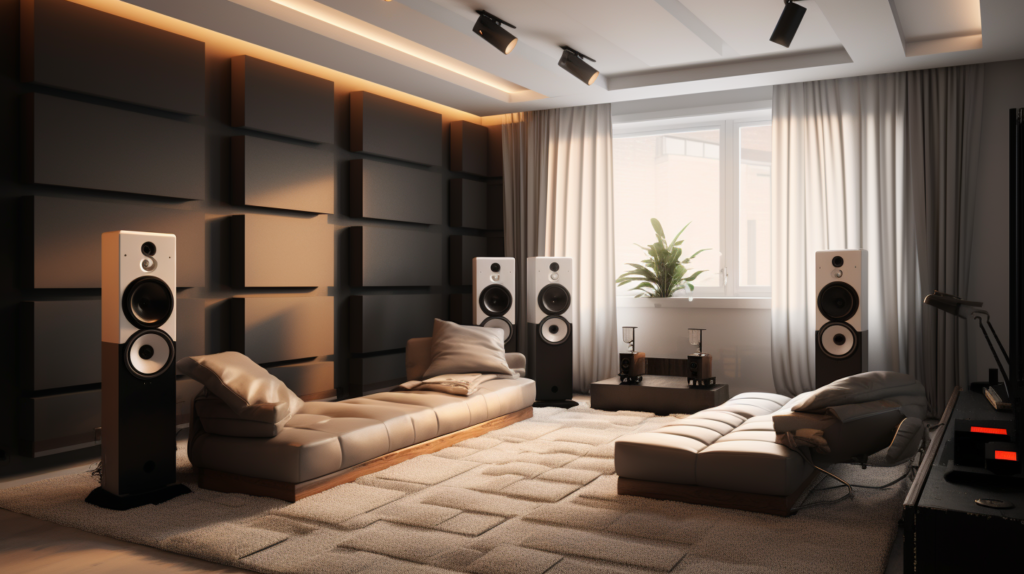
The vertical placement of bass traps is another consideration that can influence their effectiveness.
Some experts swear by a floor-to-ceiling approach in corner installations, ensuring that bass build-up is minimized throughout the entire height of the room.
This often involves stacking multiple bass traps on top of each other, or using taller traps that extend from floor to ceiling.
However, there are practical limitations to consider. Not every room will allow for a floor-to-ceiling setup.
Architectural features like low-hanging ceilings, beams, or built-in shelves can obstruct this approach.
In such cases, choosing between floor or ceiling placement becomes an exercise in optimization.
For rooms with lower ceilings, placing bass traps closer to the floor can help manage bass more effectively.
In rooms with higher ceilings, you may find that bass frequencies resonate more at the ceiling level, making ceiling-oriented traps a better choice.
However, these are general guidelines and the acoustics can vary from room to room.
Should I Put Bass Traps Behind My Speakers?
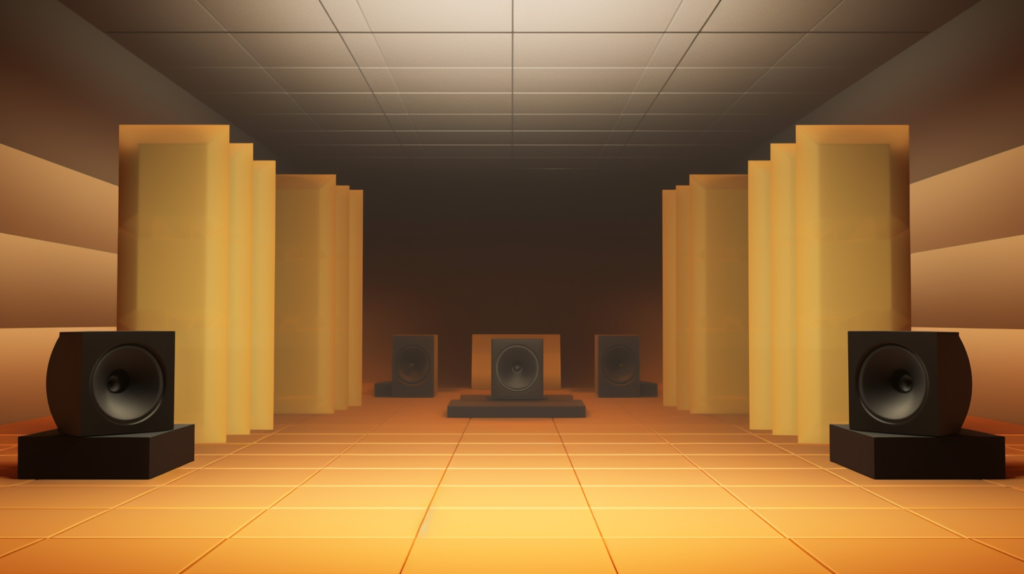
Another area of interest that frequently comes up in discussions about bass trap placement is the space directly behind the speakers.
Speakers generate sound waves that radiate in multiple directions, including towards the wall behind them.
These sound waves can bounce back into the room, causing phase interference and creating muddy or imprecise audio.
Placing bass traps behind your speakers can, therefore, be a strategic move to absorb these problematic low frequencies.
However, there is a note of caution to consider. Focusing solely on this area at the expense of corners could result in an unbalanced acoustic treatment.
Ideally, the area behind the speakers should be part of a comprehensive plan that includes corner and potentially wall placement.
In practice, you may need to experiment with various configurations to determine the most effective combination of corner, wall, and behind-the-speaker placements.
It’s advisable to measure the room’s acoustics with specialized software after each change to understand its impact.
This data-driven approach can help guide further adjustments, ensuring that you’re moving toward the most balanced sound environment possible.
How to Install Bass Traps
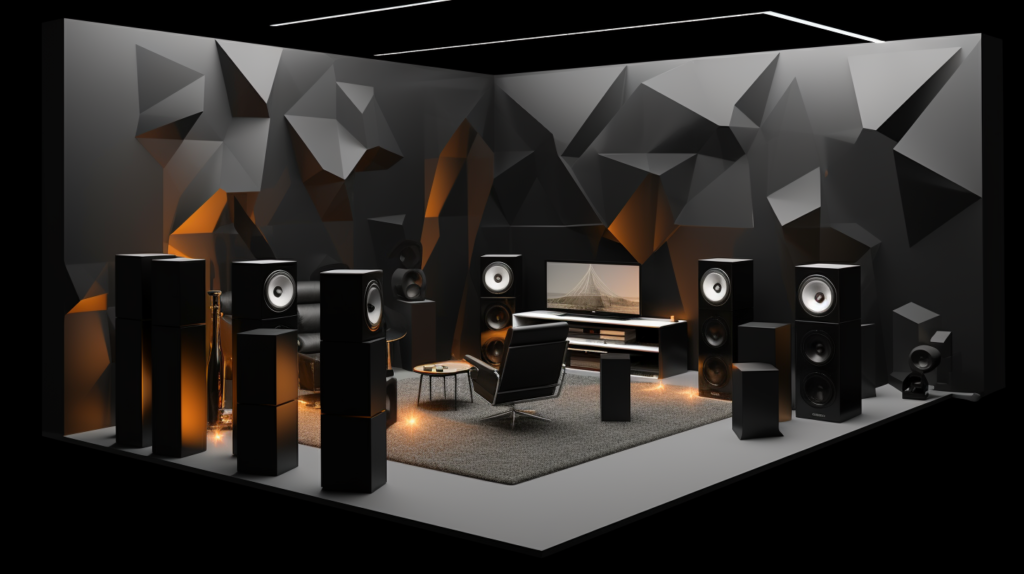
Installation might seem straightforward, but attention to detail can make a significant difference in the effectiveness of your bass traps.
rior to installation, it’s crucial to take accurate measurements of your room and the areas where you intend to place the traps.
Without proper measurements, you risk installing traps that are either too large or too small to be effective, wasting both time and resources.
After you’ve obtained the necessary measurements, consult the manufacturer’s guidelines for installation procedures specific to your chosen bass traps.
There can be variations in design and mounting options depending on the type of trap and its intended placement location.
Common installation methods include using screws and wall anchors, or adhesive strips for less permanent setups.
Whichever method you choose, be sure to follow the guidelines meticulously. A poorly installed bass trap will not perform optimally, defeating the purpose of your investment.
Additional Tips for Maximizing the Effectiveness of Bass Traps

Even after your bass traps are installed, the work isn’t necessarily over. Acoustic treatment is often an iterative process, requiring adjustments based on real-world performance.
For example, you may initially think that your traps should only be in the corners, but upon listening, you realize that additional wall placement could be beneficial.
One often-overlooked aspect of maximizing bass trap effectiveness is the material of the traps themselves.
While this article focuses on placement rather than types, it’s essential to understand that the density and porosity of the material can influence performance.
Therefore, if you find that your current setup isn’t yielding the desired results, it might be worth exploring bass traps made from different materials as part of your troubleshooting process.
As with any other form of room treatment, it’s highly beneficial to test your room’s acoustics scientifically.
Utilizing software tools to analyze how sound behaves in your space can provide invaluable insights.
These tools can help pinpoint specific problem areas that might not be apparent through casual listening, allowing for more targeted placement of bass traps.
Making Adjustments Based on Room Use
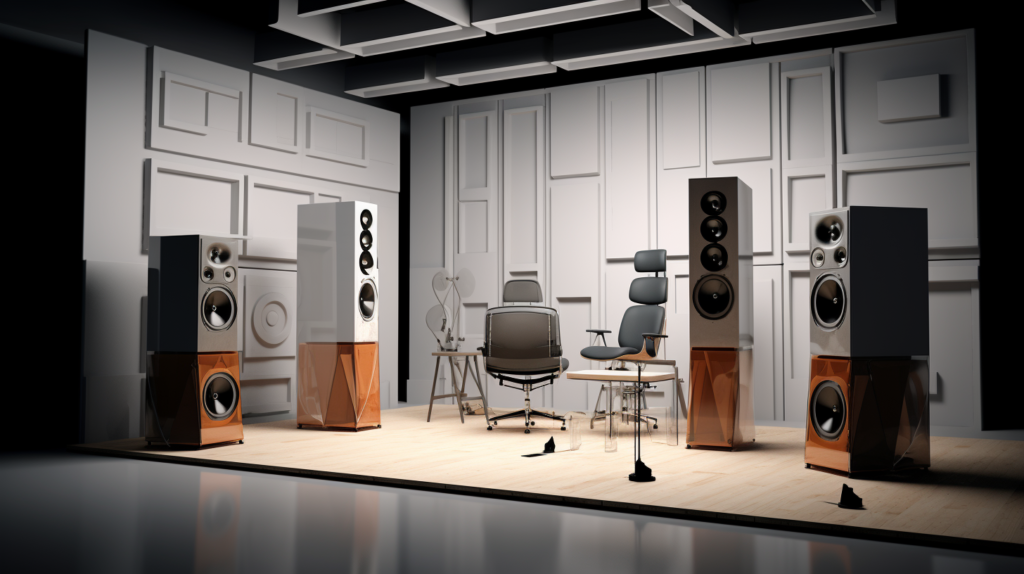
The intended use of your room can also dictate where bass traps should be placed for optimum performance.
A home theater setup, a music production studio, or a listening room each has its specific needs when it comes to acoustic treatment.
For example, in a home theater environment, you may be dealing with surround sound systems, which generate bass frequencies from multiple angles.
In such a scenario, you might need to focus on more than just the corners or the area behind the main speakers.
In a music production studio, the listening or “sweet spot” is typically more centralized. Producers and sound engineers often have a more focused area where they monitor audio.
In such cases, bass trap placement may need to be more nuanced to treat the specific frequencies that are most prevalent in the types of music being produced or recorded.
This makes it essential to include room measurements as a part of your ongoing monitoring to adjust the placement of bass traps accordingly.
Similarly, in a casual listening room or audiophile setup, the focus might be on enjoying a wide range of music genres.
As such, you’ll likely aim for a more balanced, versatile acoustic treatment that can effectively handle various types of sound.
Again, the principles of placement in corners, walls, and potentially behind speakers still apply but may be adjusted to suit the room’s specific purpose.
Overcoming Common Challenges in Bass Trap Placement
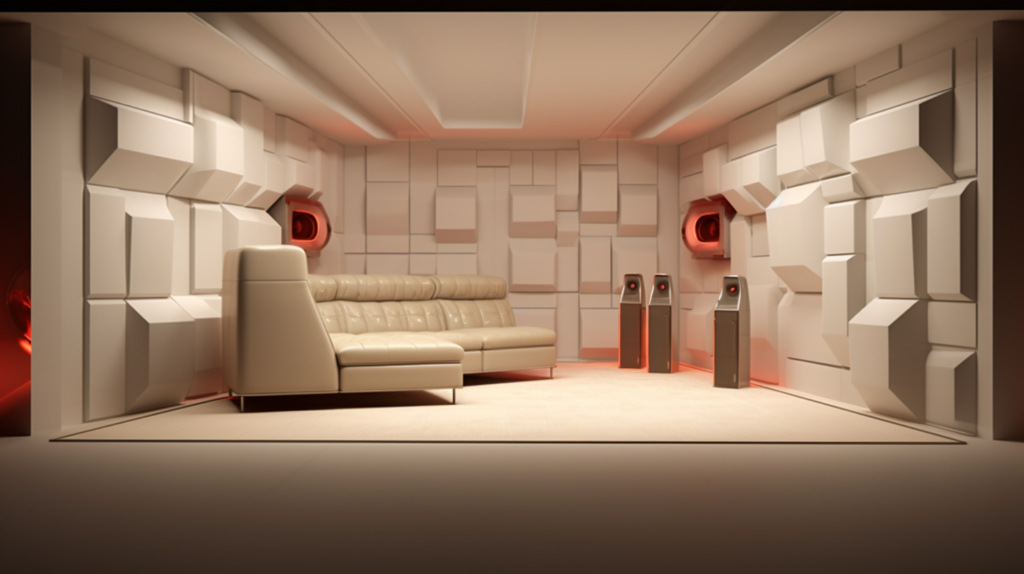
While bass traps are effective tools in the quest for better sound, several challenges might complicate their placement.
One of these challenges is room aesthetics. Bulky bass traps may not always align with your interior design goals.
However, some manufacturers offer bass traps with customizable fabrics or finishes, helping them blend into your room’s decor.
Another challenge is the physical layout and construction of your room. Radiators, windows, or built-in furniture might restrict where you can place bass traps.
In such cases, custom-built bass traps designed to fit your room’s unique dimensions might be a solution worth exploring.
Remember, compromises on placement could result in compromised sound quality, making it crucial to address these challenges head-on.
A third common challenge is budget constraints. High-quality bass traps can be expensive, especially if you need multiple units to treat a room adequately.
One way to mitigate this is to start with a few high-quality traps in the most critical areas (typically the corners), and then incrementally add more as budget allows.
This approach provides the foundational benefits of bass trapping while leaving room for future improvements.
Conclusion
Understanding the art of bass trap placement is crucial for anyone seeking to improve their audio environment.
Unlike other acoustic treatments that manage mid and high frequencies, bass traps are specialized tools designed to absorb low frequencies.
Their effectiveness is not just about the quality or type of trap you use, but also about where you place them in the room.
Proper placement is essential, whether in room corners, along walls, or behind speakers, and often requires a tailored approach based on the room’s specific acoustical challenges and intended use.
By giving careful attention to the details, from room measurements to installation methods, and from material selection to ongoing adjustments based on room usage, you can create an optimized listening environment.
Challenges like aesthetics, room layout, and budget may present hurdles, but they are not insurmountable.
With strategic planning and a willingness to adapt, you can maximize the effectiveness of your bass traps and significantly improve your audio experience.
